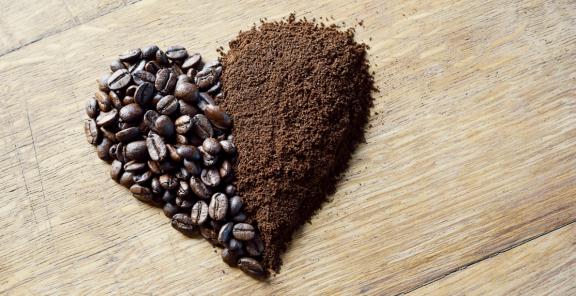There are a lot of articles out there regarding using spent coffee grounds in the garden. You’ve probably heard them all from the grounds aerating your soil to helping alter the pH and even being a cheap replacement to fertilizer.
How do you know that any of this works and it’s not just marketing for the coffee companies?
Well, first of all, the coffee companies didn’t “invent” our desire to be frugal and reuse coffee grounds. Being frugal and reusing things in something humans have naturally done for a long time, if not since we first became cognizant of our human needs. While there is no proof of this, it is a highly logical option. After all, I can think of more than a few grandparents that put coffee grounds in their compost after reusing them for a second pot of coffee. Why? Well, my great grandpa used to say, “That’s just the way Mum always did it, so I always do it.” That’s enough to convince me that marketing didn’t come before reusing coffee grounds. Now all that’s left to figure out is how accurate those claims about coffee grounds really are.
Sunset, a lifestyle magazine parent company geared to the western United States, sent in some Starbucks coffee grounds to the Soil and Plant Laboratories, Inc to see for themselves.
Summary: Use of Starbucks coffee grounds in amending mineral soils up to 35 percent by volume coffee grounds will improve soil structure over the short-term and over the long-term. Use of the coffee grounds at the specified incorporation rates (rototilled into a 6- to 8-inch depth) will substantially improve availabilities of phosphorus, potassium, magnesium and copper and will probably negate the need for chemical sources of these plant essential elements.
Nitrogen: 2.28 percent
Phosphorus: 0.06 percent
Potassium: 0.6 percentAvailable nutrient levels: The pH or reaction of the coffee grounds is considered slightly acidic and in a favorable range at 6.2 on the pH scale.
Salinity (ECe) is a measurement of total soluble salts and is considered slightly elevated at 3.7 dS/m. The primary water-soluble salts in this product are potassium, magnesium, sodium and chloride. The potentially problematic ions in sodium and chloride are each sufficiently low as to be inconsequential in terms of creating problems for plants.
What that all mean for you, Savvy Urbanite Gardener, is that your brew has some benefits that can be explained with chemistry and physics.
The grains of coffee can improve the texture of soil for the short term because of their shape. The long term benefits come from the subtle changes that are continually applied over time as the grounds are added, the nutrients are released, and the soil changes. That’s also why they recommend tilling the grounds in at a depth of 6 to 8 inches; it’s the perfect depth for root growth and your plants will thank you for the extra feed.
Are those chemical amounts safe?!
As you know, you can have too much of a good thing. Despite how much our plants love nutrients, specifically nitrogen, potassium, and phosphorus, too much can cause your plants and yard to look sickly and damaged — because they are. Luckily for you, coffee grounds are well enough what most bagged fertilizers have in them, which at the minimum is usually around 10%.
Grounds clearly fall well below this which means that while you won’t have to worry about burning your plants, you may have to adjust your supplemental fertilizers to balance out the use of coffee grounds. That is, you’ll use a lot less of the chemically made fertilizers if you have to use them to supplement your garden.
The other minerals such as phosphorous, potassium, and trace minerals in coffee grounds, however, are of sufficient quantity that it will bring the nutrient levels up to where most plants are perfectly happy with them. This works because the slightly acidic nature of the grounds releases some of the bound nutrients that plants need from the soil.
What about coffee residue?
Hey, not everyone is a coffee purist, and some people (like me) are just plain desperate when travelling. Instant coffee is also one of the most plentiful residues from the coffee industry, with a world wide generation of 6 million tons. This instant coffee powder is very similar to the powder residue in your grinder. It’s not really that great for drinking, but it would be a shame to waste it. The re-utilisation of this resource could have a huge impact in the fuel industry for the amount of left over sugars , but what about your garden?
Taking left over packets of instant coffee or swiping the residue from your grinder into your garden is not “used” coffee so it has a different chemical make up on top of a different grain structure. The chemistry is higher in hemicelluloses — which are the second most common polysaccharide around . This is mostly useless for the plants as is, but it’s great for the microbes that live inside the soil, or, better yet, in your compost heap. The grain structure really won’t let a lot of aeration to your soil, either, so the compost heap is your better bet for those leftovers.
Have your coffee and use it, too.
In the end, coffee is a great soil additive. The irregular shapes help break up the soil while the chemical compounds left over are just enough to give a little boost. You’ll get the most effective use from the grounds by adding them to your compost and tilling them into your soil, but just tilling them in before planting isn’t a bad option either.
Bibliography

